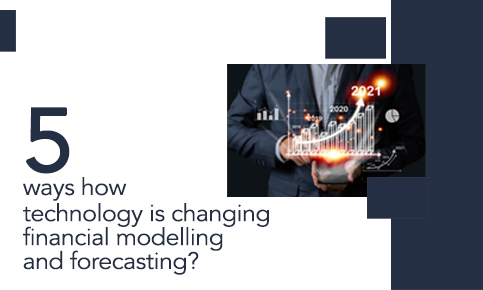There is a common notion that ‘technology’ is a separate physical entity. They don’t view technology as an element that can possess variable characteristics, for instance- forecasts, probability statements etc. Technology is considered to either exist in a given situation or not. It is seldom seen as a paramount and prerequisite to other components it is attached to.
Technology is ‘knowledge’ which can vary and mutate over time. It can be collaborated with almost every element and can transform its functioning. It can be collaborated with a basic functioning to a practical problem, device, production machine etc. Technology has the ability to transform the entire working.
The financial ecosystem is leveraging technology to the best of their capacity to devise strategies that can best suit the service they intend to construct. To attain this, technology needs to be mutated with other elements to customize and introduce variations. Financial institutions are heavily investing in financial modelling and forecasting to catapult customer centric services.
Here are 5 ways how technology has enabled financial modelling and forecasting-
1. Market Value Analysis
Market forecasts are undertaken to predict the size, characteristics, preferences, needs etc. of a targeted market/audience with near accuracy. Forecasting and modelling has allowed market analysts to estimate the size of the market and to evaluate the probabilities and implications of the market success. It has also allowed them to predict future market structure, opportunities, threats etc. thereby taking their analyses to decimal accuracy.
2. Individual Analysis
Technology driven firms are heavily investing and constructing insights driven from competent and imaginative people. By analysing and observing measurements of underlying data, trends, behaviour, interactions etc., they build a personality which is then tracked and catered to. Although this includes its own inherent error, this approach has helped financial institutions in bringing expectation closer to reality.
3. Demand Analysis
It is believed that technology is only said to be utilized when it responds to a need otherwise, it is never a functioning reality. Financial institutions strive to cater to this need by projecting future needs and requirements while upgrading existing technology.
4. Demographic and Sociological Analysis
Technology has enabled forecasting and modelling to the magnitude where it can also determine future needs and performance of services specific to demographic areas. Each demographic area has a different sociological approach and forecasting helps in modelling the services or products appropriately.
5. Conditional Demand Analysis
This assessment helps in determining and predicting the conditions under which new technology will be needed, its performance and when the event shall occur. While considering vast demographics, the requirement for the type of technology, its level of intervention and the area of need may vary.
Financial forecasting and modelling has become an integral part of ‘technological analysis’. Apart from the stated pointers, it has completely revamped how the markets, customers, demand and supply etc. is viewed and responded to. These are merely preludes to more intrinsic areas where forecasting and thereby modelling is and can be used in the financial ecosystem.
